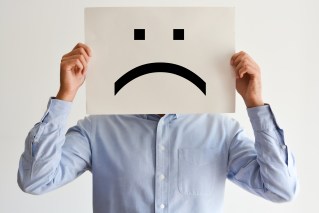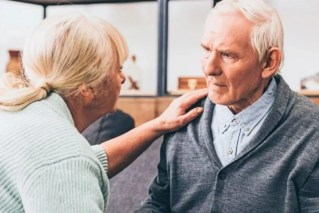True grit: The next big obesity treatment might be a pill full of sand


Engineered particles of purified sand are gentler on the stomach than mainstream obesity medications. Photo: Getty
Last week, Melbourne hosted the International Congress on Obesity.
This was five days of sharing “the latest research on all aspects of obesity, new innovative preventive and treatment strategies, and insight from the world’s leading obesity specialists”.
There were some interesting insights.
For example, as we reported, women appear to lose more weight with weight loss drugs, whereas men tend to lose more weight with diets.
Next year’s conference is already being planned, for London. The work continues. More insights await. But the overall picture is that, globally and in Australia, we’re going backwards.
While more people are becoming obese, relatively few people fully recover from it.
The ghastly truth
About seven years ago, a study of UK health records found that the chances of recovering from obesity and returning to a “normal” weight were about half a per cent for men.
That is, for every 200 men burdened with obesity, less than one would make a full recovery.
For women it was less than one per cent.
For people with a BMI of 40-plus, the threshold for morbid obesity, the situation was much worse: 1 in 1290 for men and 1 in 677 for women with morbid obesity were likely to return to “normal” weight.

It’s rare for obese people to return to a normal weight with lifestyle changes. Photo: Getty
The annual probability of achieving even a 5 per cent weight reduction was one in 8 for men and one in 7 for women with morbid obesity.
These were people whose obesity was being treated with lifestyle changes (diet and exercise), and perhaps some counselling and medication.
The study concluded, with great understatement, that: “Obesity treatment frameworks grounded in community-based weight management programs may be ineffective.”
What followed, of course, were headlines – from the BBC to sober health advice sites – that told of the ‘slim chance’ that obesity could be beat.
The good news is that any weight loss will improve your health.
What about surgery?
The review didn’t include gastric banding or bypass surgery.
It was roughly around then that doctors went from talking about surgical intervention being not simply an option, but a necessity.
While there’s good evidence that many people who undergo this surgery are healthier – with reduced risks of dying from cancer and heart disease – their excess weight is rarely fully lost.

Gastric banding has probably saved many lives. But the weight loss is limited. Photo: Getty
As a 2019 report at newsGP noted:
“Typical early weight loss following bariatric surgery ranges from 47–80 per cent of excess weight. However, typical weight regain is 15–25 per cent of that lost weight.
This can be very disheartening for patients and it is very important to manage expectations of weight following surgery.”
New drugs
Then there’s medication. But again, as a remedy it only gets you so far.
The wonder drug most recently adopted by overweight people is semaglutide.
In February 2021, The New Daily reported that this drug was being hailed as a “game changer” in the management of obesity – and for once, a large, gold-standard clinical trial backed up the hype.
A single weekly injection of the drug, for 68 weeks, saw an average loss of 15 per cent body weight in trial participants.

The drug semaglutide is helpful but not a cure for obesity. Photo: Getty
More than a third of the participants who took the drug lost more than 20 per cent of their weight.
On the Australian scene, the drug was approved as a treatment for type 2 diabetes for patients who couldn’t tolerate or gained no benefit from the standard medication, metformin.
As we reported, some bariatric surgeons were using semaglutide to help patients lose enough weight to safely undergo surgery.
Huge demand
But in the last year, the drug has become a TikTok sensation among mainly young women trying to lose weight.
It was so popular that stocks began to run short and diabetes patients were at risk of missing out.
In May, we reported that the Therapeutic Goods Administration (TGA) quietly issued a statement, directed at GPs, urging them to stop prescribing the drug for obesity management.
It has to be said, though, that once you stop taking the drug, the weight returns.
It also has to be said that, in general, weight loss medication – which is meant to be taken as an adjunct to lifestyle changes – has common if mostly mild side effects.
And the results tend to be more modest than those gained from semaglutide, which is nowhere near being a cure.
The search for new remedies
It’s now thought that obesity needs to be approached as a problem in the brain, where control of appetite and feelings of fullness go badly awry in the obese body.
In fact, the fatter people get, the more their body turns against them.
The true curse probably lies in the signalling between the brain and the endocrine system.
That’s an issue for another day, but for a neat explanation, see here.
Some lateral thinking required
Meanwhile, a University of South Australian study has taken a big step toward a different kind of treatment, the ingesting of nano silica particles, made from purified sand.
These nano particles are designed “to soak up large amounts of digestive enzymes, fats, and sugars within the gastrointestinal tract”.

Could nanoparticles of sand be the game changer? Photo: Getty
Funded by the Channel 7 Children’s Research Foundation, the study is “the first to validate how porous silica particles can impede digestive processes and stop fat and sugar adsorption”.
In short, these particles, taken orally, prevent fats and sugars – some not all – from being released into the blood stream.
Research into a silica-based therapy has moved along pretty quickly, as far as medical research goes.
From mice to men
In 2014, a study with mice found that when the animals received large pore mesoporous silica particles with a high-fat diet, they underwent a “significant reduction in body weight and fat composition, with no observable negative effects”.
Follow-up studies supported these findings.
In 2020, the first human safety study was published. The participants were young men, either or healthy weight or obese.

Experiments in mice have been encouraging. Photo: Getty
The study found that the participants could safely consume up to nine grams a day of silica particles without the abdominal discomfort or changes in bowel movements that often occur with mainstream medications.
“The side effects observed were mild and tolerable, biomarkers did not give any safety concern, and no severe adverse events occurred,” the authors wrote.
Further, the silica particles were found to reduce blood glucose levels and blood cholesterol levels.
The South Australian study
This was in-vitro study that examined multiple silica samples, with a variety of pore sizes, in conditions “that mimicked the gastrointestinal environment during the digestion of a high-fat, high-carbohydrate meal”.
Essentially this was a simulated stomach and digestive tract where the digestion of carbohydrates and fats were monitored, and where the particles with different pore sizes were observed to absorb both digested and undigested nutrients before they were released into the blood stream.
The study found that porous silica particles with pore widths between 6–10 nm “are ideal for triggering an inhibitory response to both fats and sugars”.
Lead researcher Dr Paul Joyce said the research had shown “how porous silica promotes an anti-obesity effect by functioning locally in the gut to restrict fat and carbohydrate digestion and absorption”.
He said that “Importantly, the gentle mechanism is expected to deliver clinically effective outcomes for weight loss, without adverse effects”.
Dr Joyce said the next steps were to validate the findings with animal models of obesity “so that we can determine any variations for optimal anti-obesity conditions”.
All going well, this would be followed with human trials.








